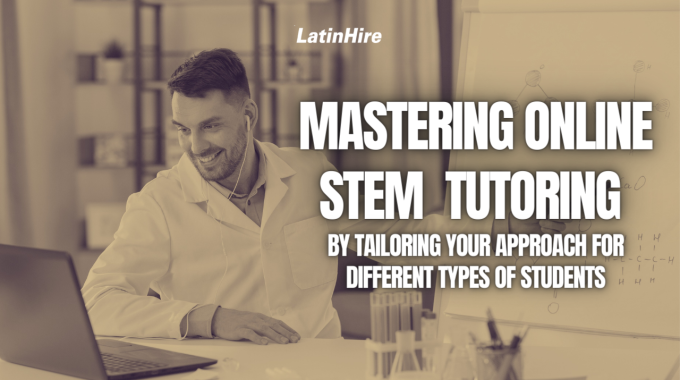In last week’s article, we looked at introducing quantum numbers using a condo analogy as…

Mastering Online STEM Tutoring by Tailoring Your Approach for Different Types of Students
The rise of online education has transformed the way students access information and acquire knowledge. STEM subjects – science, technology, engineering and mathematics – in particular have seen a surge in online tutoring demands.
As a STEM tutor, adapting your teaching methods to accommodate the diverse needs and learning styles of your students is essential to ensure their academic success. In this article, we will take a look at effective strategies for tutoring different types of students online!
1) Identify Your Students’ Needs

Before you begin tutoring, it’s crucial to assess your students’ unique needs and learning preferences. This will help you tailor your approach to their specific requirements. Here are some ways to identify their needs:
- Conduct an initial assessment: Have your students complete diagnostic questions to gauge their existing knowledge and identify weak areas.
- Communicate openly: Establish clear communication with your students and discuss their goals, expectations and any challenges they may be facing.
- Adapt to different age groups: Understand that elementary school, middle school, high school, and college students have varying levels of cognitive development, interests and attention spans. Tailor your approach accordingly.
2) Effective Online Tools and Platforms
Using the right tools and platforms can enhance the online tutoring experience. Here are some essential tools and platforms for online STEM tutoring:
- Video conferencing software: Platforms like Zoom, Skype or Google Meet allow for real-time communication and screen sharing, making it easier to explain complex concepts visually.
- Interactive whiteboards: Some video conferencing software, like Zoom, include interactive whiteboards where both you and the students can draw diagrams and solve problems together. This engages students in active learning. Other online whiteboards include Miro, Limnu and Ziteboard.
- Educational websites and resources: Recommended websites, YouTube channels, or online practice questions can help supplement your students’ learning and help them have a better grasp of the concepts.
3) Adapting to Different Learning Styles

Not all students learn in the same way. Tailor your teaching approach to accommodate different learning styles, including visual, auditory, and kinesthetic learners.
- Visual learners: Incorporate diagrams, charts, and visual aids to explain complex concepts. Use screen sharing to show visual representations during online sessions.
- Auditory learners: Explain concepts verbally and encourage discussions. Provide audio resources or recorded explanations for them to revisit.
- Kinesthetic learners: Encourage hands-on activities, experiments, and interactive exercises whenever possible. Assign practical assignments to reinforce learning.
4) Personalized Lesson Plans
Each student has their own pace of learning and areas of improvement. Create personalized lesson plans that cater to your students’ strengths and weaknesses.
- Set clear learning objectives: Outline the goals and expectations for each lesson to keep students focused and motivated.
- Break down complex topics: Divide complex topics into manageable subtopics, allowing students to grasp one concept at a time.
- Provide regular feedback: Offer constructive feedback on assignments and assessments to help students improve continuously.
5) Encourage Critical Thinking

STEM subjects often require critical thinking and problem-solving skills. Encourage your students to think critically and independently by:
- Assigning challenging problems: Present students with problems that require critical analysis and creative solutions.
- Encouraging questions: Create a safe and open environment for students to ask questions and explore concepts further.
- Promoting experimentation: Encourage students to experiment and explore STEM concepts through hands-on activities and projects.
What are other strategies you use to effectively tutor STEM subjects online? Share them in the comments below!



